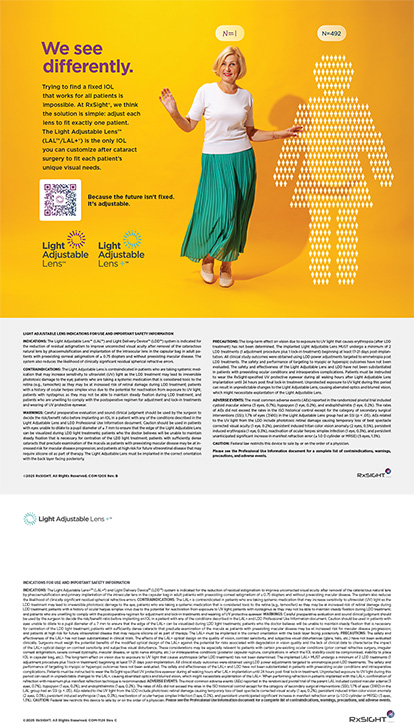

Cortical aspiration often receives less attention than more intricate maneuvers like capsulorhexis and nuclear disassembly and removal. Although cortical cleanup is typically quick and easy, meticulous execution of this step is critical to successful cataract surgery, and complications can occur. There is an incredible variety of techniques and instrumentation available, and even surgeons who are comfortable with one particular approach should be able to adapt to the requirements of each case.
THE SETUP
Optimal cortical removal starts with effective cortical cleaving hydrodissection. This is especially important in patients with laser capsulotomies, where amputated cortical fibers are more difficult to engage than the free-floating cortical strands of a manual capsulorhexis. In addition to fluid waves, a capsule polisher may be used to mechanically loosen the cortex.
TECHNIQUE
Cortical removal begins with introduction of the I/A tip (port up) under the anterior capsular rim. Aspiration engages cortical fibers. Once vacuum rises, the I/A tip is moved centrally. After the edge of the capsulorhexis is cleared, aspiration is increased, and cortex is completely stripped from the capsule. This process is repeated until all cortical material has been removed. To improve efficiency, surgeons can sweep the I/A tip across 2 to 3 clock hours to engage more cortex prior to pulling the material centrally. Although cortex can be grasped on the posterior capsule, this direction of removal tends to leave more residual fibers, and it increases the likelihood of accidentally engaging the posterior capsule. Polishing the anterior capsular rim as well as the posterior capsule may prevent capsular fibrosis and Elschnig pearl formation.
Subincisional cortex can be challenging to remove, and long or anterior corneal incisions can exacerbate the problem. Some surgeons approach subincisional cortex first, whereas others save it for last. If the removal of subincisional cortex proves to be difficult, viscodissection of the residual cortex can be attempted. A capsule polisher may also be introduced to physically loosen the cortical material. Another option is to place the IOL prior to complete cortical removal. The haptics and optic of the IOL may then be rotated to loosen the cortical material mechanically. The IOL can also act as a physical barrier to protect the posterior capsule while you are reaching subincisionally. Moreover, the IOL tautens the capsular bag, which can ease the removal of residual cortical strands and prevent the capsule from entering the aspiration port.
INSTRUMENTATION
The instrumentation used depends on surgeon preference. Metal I/A tips should be in good condition and free of burrs, which can tear the capsule. The I/A tip may be smooth or diamond-dusted to facilitate capsule polishing. Silicone tips may be a more capsule-friendly option.1
The I/A tip may be straight, curved, or angled at 45º, 90º, or even 150º. A coaxial or a bimanual approach may be used. Cortical removal may be done with either a peristaltic pump or a venturi system, which makes it easier to engage cortical strands without occlusion.
CHALLENGES
Cortical removal can be more difficult in certain clinical scenarios. Placing a capsular tension ring (CTR) can increase stability in an eye with loose zonules. Because a CTR may hold the cortex against the capsular fornix, preventing the material from being aspirated, the CTR should be placed as late as possible but as early as needed. An alternative is to use a Henderson CTR (Morcher, US distributor FCI Ophthalmics). Indentations along the circumference of this CTR prevent compression of cortex against the capsule and thus can make it easier for cortex to be removed.
Increased posterior pressure can also present a challenge. Surgeons can use a blunt second instrument to gently hold back the posterior capsule. Early placement of the IOL can be helpful as well.
To avoid capsular tears, surgeons should stay vigilant for the characteristic star-fold pattern that appears when the I/A tip grabs the posterior capsule. When this pattern appears, it is important to stop aspiration and to keep the I/A tip still. If needed, the surgeon can engage reflux to expel the capsule from the I/A tip. Even when you are focusing on one area of cortex to be removed, it is important to keep the entire capsule in view so as to be aware of unintentional aspiration or zonular compromise. To minimize strain on the zonules, a tangential stripping technique—in which the I/A tip is moved tangentially after engaging cortex—may be used. This technique can reduce strain on a focal area of zonular weakness.
CONCLUSION
Cortical cleanup usually takes less time than required to read this article. Nevertheless, thorough and complete cortical removal is important in every case. It therefore behooves cataract surgeons to become proficient at this key step to prepare the eye for successful IOL implantation.
1. Blomquist PH, Pluenneke AC. Decrease in complications during cataract surgery with the use of a silicone-tipped irrigation/aspiration instrument. J Cataract Refract Surg. 2005;31(6):1194-1197.




